Social media and online engagement have become critical success factors for all those online. At the same time, online trolling (abuse) has become rampant, with both short and long-term effects on freedom of expression. Online abuse may result in emotional and physical stress, erosion of individual and brand identity, credibility, financial and other repercussions. In the recent past, technological abuse (satirical) by bots is also common through replies and comments.
A troll is usually by an individual with the intention to create conflicts and controversies to generate provocative debates, use insults, send offensive messages, and do character assassination
They abuse on blogging sites, social media platforms, or any online format. Trolls adopt fake identities that make them feel at ease on social platforms. They know or even might not know their victims directly, like in cyber-bullying, and they can act at any moment. Trolling happens on social media platforms, internet chat rooms, WhatsApp groups, discussion forums, and blogs.
How to identify a troller
They have an ambiguous bio, name, and picture and it is unclear, who trolled, where they are from, and what they do. It’s also observed that a majority of them have very few followers. Most of their posts do not seem to engage in a conversation and dialogue.
They post angry or provocative comments, tagging in many organizations or people who are not at all connected to the current issue and they use offensive and abusive language. They often post floods of comments and then switch topic, tack or focus. They rarely post on issues related to your work, but they take a strong opinion on the topic that you have posted.
Pest control for trolling
Always remember if you are going to be on social media, you need to be social, which means you need to interact with all your audiences. However, you cannot please all the people all the time. Avoiding social media does not mean you avoid negative comments. Ignoring negative comments can have a negative business or personal impact. But careful management of negative comments can actually add value. Failing to prepare is preparing to fail and therefore plan ahead without waiting till something goes wrong.
From an organizational perspective
• Define your community ‘house rules’ first
• Select the right listening tools
• Identify people responsible for monitoring
• Identify and engage your emergency contacts
• Agree what to monitor for and which channels to monitor
• Understand legal, regulatory, and ethical requirements
• Create your severity framework and its classification
• Define your incident logging process and protocols
• Define best practices based on past experiences
From an individual perspective
• Establish a policy of what comments are allowed or not allowed
• Ignoring a troll could be a good tactic
• When they don’t get a response, they might stay silent
• Engage in a light-hearted manner, especially if you are wrong
• Identify the troller with a social profile check before proceeding
• If it’s your account, you can delete comments or ban members
• Use a moderator or an online tool to monitor activity on your sites
• Create a like-minded follower community around you
• Ensure key followers are well trained in managing trolls
• Sometimes people just want to be heard
• Give an ear and they might even thank you
• Reply with factual data, so that you can stop the further controversy
• Say sorry if there is a mistake


















